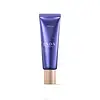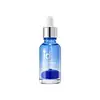What's inside
What's inside
 Key Ingredients
Key Ingredients

 Benefits
Benefits

 Concerns
Concerns

 Ingredients Side-by-side
Ingredients Side-by-side

Water
Skin ConditioningCaprylic/Capric Triglyceride
MaskingCetyl Ethylhexanoate
EmollientDipropylene Glycol
HumectantGlycerin
HumectantButylene Glycol
Humectant1,2-Hexanediol
Skin ConditioningHydrogenated Polydecene
EmollientDiisostearyl Malate
EmollientNiacinamide
SmoothingC14-22 Alcohols
Emulsion StabilisingGlyceryl Stearate Se
EmulsifyingCetearyl Alcohol
EmollientBetaine
HumectantDimethicone
EmollientPolyacrylate-13
C12-20 Alkyl Glucoside
EmulsifyingAmmonium Acryloyldimethyltaurate/Vp Copolymer
Polyisobutene
Sodium Stearoyl Glutamate
CleansingAcrylates/C10-30 Alkyl Acrylate Crosspolymer
Emulsion StabilisingCreatine
Skin ConditioningParfum
MaskingTrehalose
HumectantTromethamine
BufferingEthylhexylglycerin
Skin ConditioningSodium Hyaluronate
HumectantSodium Polyacrylate
AbsorbentAdenosine
Skin ConditioningPolysorbate 20
EmulsifyingSorbitan Isostearate
EmulsifyingCrithmum Maritimum Callus Culture Filtrate
Skin ProtectingLactobacillus Extracellular Vesicles
Isostearyl Isostearate
EmollientLecithin
EmollientPolyglyceryl-2 Stearate
EmulsifyingIsononyl Isononanoate
EmollientPolyglyceryl-10 Stearate
Skin ConditioningCyanocobalamin
Skin ConditioningDipotassium Glycyrrhizate
HumectantPalmitic Acid
EmollientArginine
MaskingStearic Acid
CleansingNicotinamide Adenine Dinucleotide
Skin ConditioningCarthamus Tinctorius Seed Oil
MaskingHydrogenated Phosphatidylcholine
EmulsifyingOenothera Biennis Oil
EmollientSqualane
EmollientCeramide NP
Skin ConditioningCholesterol
EmollientPolyquaternium-51
Skin ConditioningSodium Dna
Skin ConditioningWater, Caprylic/Capric Triglyceride, Cetyl Ethylhexanoate, Dipropylene Glycol, Glycerin, Butylene Glycol, 1,2-Hexanediol, Hydrogenated Polydecene, Diisostearyl Malate, Niacinamide, C14-22 Alcohols, Glyceryl Stearate Se, Cetearyl Alcohol, Betaine, Dimethicone, Polyacrylate-13, C12-20 Alkyl Glucoside, Ammonium Acryloyldimethyltaurate/Vp Copolymer, Polyisobutene, Sodium Stearoyl Glutamate, Acrylates/C10-30 Alkyl Acrylate Crosspolymer, Creatine, Parfum, Trehalose, Tromethamine, Ethylhexylglycerin, Sodium Hyaluronate, Sodium Polyacrylate, Adenosine, Polysorbate 20, Sorbitan Isostearate, Crithmum Maritimum Callus Culture Filtrate, Lactobacillus Extracellular Vesicles, Isostearyl Isostearate, Lecithin, Polyglyceryl-2 Stearate, Isononyl Isononanoate, Polyglyceryl-10 Stearate, Cyanocobalamin, Dipotassium Glycyrrhizate, Palmitic Acid, Arginine, Stearic Acid, Nicotinamide Adenine Dinucleotide, Carthamus Tinctorius Seed Oil, Hydrogenated Phosphatidylcholine, Oenothera Biennis Oil, Squalane, Ceramide NP, Cholesterol, Polyquaternium-51, Sodium Dna
Water
Skin ConditioningDiphenyl Dimethicone
EmollientPentylene Glycol
Skin ConditioningNiacinamide
SmoothingLactobacillus Extracellular Vesicles
Sea Water
HumectantEclipta Prostrata Extract
Skin ConditioningMelia Azadirachta Leaf Extract
Skin ConditioningMelia Azadirachta Flower Extract
Skin ConditioningCoccinia Indica Fruit Extract
Skin ConditioningAloe Barbadensis Flower Extract
EmollientSolanum Melongena Fruit Extract
Skin ConditioningMoringa Oleifera Seed Oil
EmollientSimmondsia Chinensis Seed Oil
EmollientCorallina Officinalis Extract
Skin ConditioningCurcuma Longa Root Extract
MaskingOcimum Sanctum Leaf Extract
Skin ConditioningCollagen
MoisturisingCucurbita Pepo Seed Oil
EmollientSea Whip Extract
Skin ConditioningSophora Japonica Flower Extract
Skin ProtectingCimicifuga Dahurica Root Extract
AntioxidantScutellaria Baicalensis Root Extract
AstringentArnica Montana Flower Extract
MaskingDiospyros Kaki Leaf Extract
Skin ProtectingHydrolyzed Collagen
EmollientSodium Hyaluronate
HumectantSoluble Collagen
HumectantAnemarrhena Asphodeloides Root Extract
Skin ConditioningSalvia Officinalis Extract
AntimicrobialRhodiola Rosea Root Extract
EmollientArtemisia Princeps Leaf Extract
Skin ConditioningCelosia Cristata Flower Extract
Skin ProtectingSelaginella Tamariscina Extract
Skin ConditioningCollagen Extract
Skin ConditioningHydrolyzed Hyaluronic Acid
HumectantHyaluronic Acid
HumectantGlycerin
HumectantSodium PCA
HumectantNicotinamide Mononucleotide
AntioxidantButylene Glycol
HumectantAdenosine
Skin ConditioningSodium Citrate
Buffering1,2-Hexanediol
Skin ConditioningCitric Acid
BufferingPanthenol
Skin ConditioningCaprylyl Glycol
EmollientDextran
Glutathione
Sodium Chondroitin Sulfate
Skin ConditioningDipropylene Glycol
HumectantCaprylic/Capric Triglyceride
MaskingHydrogenated Lecithin
EmulsifyingPolyglyceryl-10 Diisostearate
EmulsifyingMenadione
MaskingHydrolyzed Elastin
EmollientHydroxypropyltrimonium Hyaluronate
Hexapeptide-9
Skin ConditioningNonapeptide-1
Skin ConditioningSodium Acetylated Hyaluronate
HumectantTripeptide-1
Skin ConditioningAcetyl Hexapeptide-8
HumectantCopper Tripeptide-1
Skin ConditioningPalmitoyl Pentapeptide-4
Skin ConditioningAcetyl Tetrapeptide-5
HumectantHydrolyzed Sodium Hyaluronate
Skin ConditioningPalmitoyl Tetrapeptide-7
Skin ConditioningPalmitoyl Tripeptide-1
Skin ConditioningSodium Hyaluronate Crosspolymer
HumectantPotassium Hyaluronate
Skin ConditioningPhytol
EmollientAlcohol
AntimicrobialSodium Benzoate
MaskingParfum
MaskingWater, Diphenyl Dimethicone, Pentylene Glycol, Niacinamide, Lactobacillus Extracellular Vesicles, Sea Water, Eclipta Prostrata Extract, Melia Azadirachta Leaf Extract, Melia Azadirachta Flower Extract, Coccinia Indica Fruit Extract, Aloe Barbadensis Flower Extract, Solanum Melongena Fruit Extract, Moringa Oleifera Seed Oil, Simmondsia Chinensis Seed Oil, Corallina Officinalis Extract, Curcuma Longa Root Extract, Ocimum Sanctum Leaf Extract, Collagen, Cucurbita Pepo Seed Oil, Sea Whip Extract, Sophora Japonica Flower Extract, Cimicifuga Dahurica Root Extract, Scutellaria Baicalensis Root Extract, Arnica Montana Flower Extract, Diospyros Kaki Leaf Extract, Hydrolyzed Collagen, Sodium Hyaluronate, Soluble Collagen, Anemarrhena Asphodeloides Root Extract, Salvia Officinalis Extract, Rhodiola Rosea Root Extract, Artemisia Princeps Leaf Extract, Celosia Cristata Flower Extract, Selaginella Tamariscina Extract, Collagen Extract, Hydrolyzed Hyaluronic Acid, Hyaluronic Acid, Glycerin, Sodium PCA, Nicotinamide Mononucleotide, Butylene Glycol, Adenosine, Sodium Citrate, 1,2-Hexanediol, Citric Acid, Panthenol, Caprylyl Glycol, Dextran, Glutathione, Sodium Chondroitin Sulfate, Dipropylene Glycol, Caprylic/Capric Triglyceride, Hydrogenated Lecithin, Polyglyceryl-10 Diisostearate, Menadione, Hydrolyzed Elastin, Hydroxypropyltrimonium Hyaluronate, Hexapeptide-9, Nonapeptide-1, Sodium Acetylated Hyaluronate, Tripeptide-1, Acetyl Hexapeptide-8, Copper Tripeptide-1, Palmitoyl Pentapeptide-4, Acetyl Tetrapeptide-5, Hydrolyzed Sodium Hyaluronate, Palmitoyl Tetrapeptide-7, Palmitoyl Tripeptide-1, Sodium Hyaluronate Crosspolymer, Potassium Hyaluronate, Phytol, Alcohol, Sodium Benzoate, Parfum
Ingredients Explained
These ingredients are found in both products.
Ingredients higher up in an ingredient list are typically present in a larger amount.
1,2-Hexanediol is a synthetic liquid and another multi-functional powerhouse.
It is a:
- Humectant, drawing moisture into the skin
- Emollient, helping to soften skin
- Solvent, dispersing and stabilizing formulas
- Preservative booster, enhancing the antimicrobial activity of other preservatives
Adenosine is in every living organism. It is one of four components in nucleic acids that helps store our DNA.
Adenosine has many benefits when used. These benefits include hydrating the skin, smoothing skin, and reducing wrinkles. Once applied, adenosine increases collagen production. It also helps with improving firmness and tissue repair.
Studies have found adenosine may also help with wound healing.
In skincare products, Adenosine is usually derived from yeast.
Learn more about AdenosineButylene Glycol (or BG) is used within cosmetic products for a few different reasons:
Overall, Butylene Glycol is a safe and well-rounded ingredient that works well with other ingredients.
Though this ingredient works well with most skin types, some people with sensitive skin may experience a reaction such as allergic rashes, closed comedones, or itchiness.
Learn more about Butylene GlycolThis ingredient is an emollient, solvent, and texture enhancer. It is considered a skin-softener by helping the skin prevent moisture loss.
It helps thicken a product's formula and makes it easier to spread by dissolving clumping compounds.
Caprylic Triglyceride is made by combining glycerin with coconut oil, forming a clear liquid.
While there is an assumption Caprylic Triglyceride can clog pores due to it being derived from coconut oil, there is no research supporting this.
Learn more about Caprylic/Capric TriglycerideDipropylene Glycol is a synthetically created humectant, stabilizer, and solvent.
This ingredient helps:
Dipropylene glycol is technically an alcohol, but it belongs to the glycol family (often considered part of the ‘good’ alcohols). This means it is hydrating and gentle on skin unlike drying solvent alcohols like denatured alcohol.
As a masking agent, Dipropylene Glycol can be used to cover the smell of other ingredients. However, it does not have a scent.
Studies show Dipropylene Glycol is considered safe to use in skincare.
Learn more about Dipropylene GlycolGlycerin is already naturally found in your skin. It helps moisturize and protect your skin.
A study from 2016 found glycerin to be more effective as a humectant than AHAs and hyaluronic acid.
As a humectant, it helps the skin stay hydrated by pulling moisture to your skin. The low molecular weight of glycerin allows it to pull moisture into the deeper layers of your skin.
Hydrated skin improves your skin barrier; Your skin barrier helps protect against irritants and bacteria.
Glycerin has also been found to have antimicrobial and antiviral properties. Due to these properties, glycerin is often used in wound and burn treatments.
In cosmetics, glycerin is usually derived from plants such as soybean or palm. However, it can also be sourced from animals, such as tallow or animal fat.
This ingredient is organic, colorless, odorless, and non-toxic.
Glycerin is the name for this ingredient in American English. British English uses Glycerol/Glycerine.
Learn more about GlycerinNiacinamide is a multitasking form of vitamin B3 that strengthens the skin barrier, reduces pores and dark spots, regulates oil, and improves signs of aging.
And the best part? It's gentle and well-tolerated by most skin types, including sensitive and reactive skin.
You might have heard of "niacin flush", or the reddening of skin that causes itchiness. Niacinamide has not been found to cause this.
In very rare cases, some individuals may not be able to tolerate niacinamide at all or experience an allergic reaction to it.
If you are experiencing flaking, irritation, and dryness with this ingredient, be sure to double check all your products as this ingredient can be found in all categories of skincare.
When incorporating niacinamide into your routine, look out for concentration amounts. Typically, 5% niacinamide provides benefits such as fading dark spots. However, if you have sensitive skin, it is better to begin with a smaller concentration.
When you apply niacinamide to your skin, your body converts it into nicotinamide adenine dinucleotide (NAD). NAD is an essential coenzyme that is already found in your cells as "fuel" and powers countless biological processes.
In your skin, NAD helps repair cell damage, produce new healthy cells, support collagen production, strengthen the skin barrier, and fight environmental stressors (like UV and pollution).
Our natural NAD levels start to decline with age, leading to slower skin repair, visible aging, and a weaker skin barrier. By providing your skin niacinamide, you're recharging your skin's NAD levels. This leads to stronger, healthier, and younger looking skin.
Another name for vitamin B3 is nicotinamide. This vitamin is water-soluble and our bodies don't store it. We obtain Vitamin B3 from either food or skincare. Meat, fish, wheat, yeast, and leafy greens contain vitamin B3.
The type of niacinamide used in skincare is synthetically created.
Learn more about NiacinamideParfum is a catch-all term for an ingredient or more that is used to give a scent to products.
Also called "fragrance", this ingredient can be a blend of hundreds of chemicals or plant oils. This means every product with "fragrance" or "parfum" in the ingredients list is a different mixture.
For instance, Habanolide is a proprietary trade name for a specific aroma chemical. When used as a fragrance ingredient in cosmetics, most aroma chemicals fall under the broad labeling category of “FRAGRANCE” or “PARFUM” according to EU and US regulations.
The term 'parfum' or 'fragrance' is not regulated in many countries. In many cases, it is up to the brand to define this term.
For instance, many brands choose to label themselves as "fragrance-free" because they are not using synthetic fragrances. However, their products may still contain ingredients such as essential oils that are considered a fragrance by INCI standards.
One example is Calendula flower extract. Calendula is an essential oil that still imparts a scent or 'fragrance'.
Depending on the blend, the ingredients in the mixture can cause allergies and sensitivities on the skin. Some ingredients that are known EU allergens include linalool and citronellol.
Parfum can also be used to mask or cover an unpleasant scent.
The bottom line is: not all fragrances/parfum/ingredients are created equally. If you are worried about fragrances, we recommend taking a closer look at an ingredient. And of course, we always recommend speaking with a professional.
Learn more about ParfumSodium Hyaluronate is hyaluronic acid's salt form. It is commonly derived from the sodium salt of hyaluronic acid.
Like hyaluronic acid, it is great at holding water and acts as a humectant. This makes it a great skin hydrating ingredient.
Sodium Hyaluronate is naturally occurring in our bodies and is mostly found in eye fluid and joints.
These are some other common types of Hyaluronic Acid:
Learn more about Sodium HyaluronateWater. It's the most common cosmetic ingredient of all. You'll usually see it at the top of ingredient lists, meaning that it makes up the largest part of the product.
So why is it so popular? Water most often acts as a solvent - this means that it helps dissolve other ingredients into the formulation.
You'll also recognize water as that liquid we all need to stay alive. If you see this, drink a glass of water. Stay hydrated!
Learn more about WaterLactobacillus Extracellular Vesicles are tiny particles released by Lactobacillus bacteria into their growth liquid. These are then collected from the culture medium.